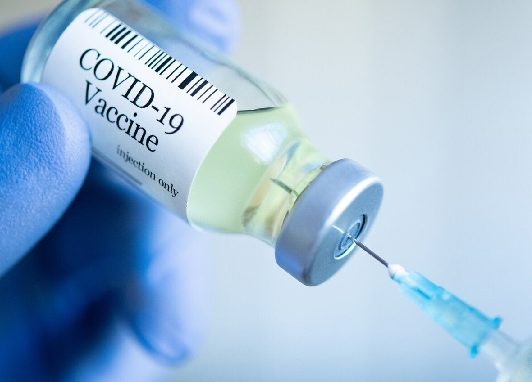Potential biological functions of the sermorelin peptide

Sermorelin is a synthetic peptide analog of the naturally occurring growth hormone-releasing hormone (GHRH), also known as somatocrinin. This peptide comprises the first 29 amino acids of the full GHRH sequence, making it the shortest fragment that retains full biological activity.
It is believed that this truncated version of GHRH retains the ability to stimulate the release of growth hormone (GH) from the pituitary gland. While much of the research surrounding Sermorelin has focused on its role in modulating growth hormone levels, ongoing investigations propose a broader range of potential research avenues and biological impacts.
Sermorelin Peptide: Mechanism of Action
Sermorelin is postulated to bind to specific GHRH receptors on the surface of pituitary somatotrophs. Studies suggest that this binding may stimulate the intracellular production of cyclic AMP (cAMP), a secondary messenger that triggers the release of GH.
The increase in GH levels is subsequently hypothesized to promote various downstream impacts, which are traditionally associated with growth hormone activity, including anabolic and metabolic processes.
The peptide’s action is thought to be highly selective for GH secretion, suggesting a potential advantage over direct GH exposure, which may lead to undesirable feedback mechanisms and regulatory complications. Sermorelin’s selectivity might thus contribute to more physiological regulation of GH levels.
Peptide: Growth and Development
As suggested by research, Sermorelin’s primary role is to promote growth and development, particularly through its potential to elevate GH levels. It has been hypothesized that Sermorelin might aid in conditions where GH deficiency is implicated, potentially providing a strategy for enhancing growth and development.
There are indications that the peptide might support bone density, muscle mass, and overall tissue growth. Research indicates that Sermorelin may contribute to an anabolic state by stimulating GH release and facilitating cellular growth and regeneration. This anabolic impact potentially aids pediatric growth deficiencies and scenarios where enhanced tissue repair and regeneration are desirable.
Sermorelin Peptide: Metabolic and Anabolic Research
Beyond its possible role in growth, GH is speculated to influence various metabolic processes. Investigations purport that through its GH-releasing activity, Sermorelin might impact lipid metabolism, protein synthesis, and glucose homeostasis. GH is believed to promote lipolysis, leading to the breakdown of fat stores, and it may also enhance protein synthesis, contributing to muscle growth.
These metabolic impacts suggest that Sermorelin could play a role in conditions characterized by metabolic dysfunction or in scenarios where metabolic enhancement is valuable.
Furthermore, GH has been implicated in regulating carbohydrate metabolism, suggesting that Sermorelin might influence glucose levels and insulin sensitivity. This could have potential implications for metabolic disorders, although further investigations are needed to substantiate these impacts and clarify the underlying mechanisms.
Sermorelin Peptide: Cognition
Emerging research proposes that GH and GHRH might have impacts beyond traditional growth and metabolic pathways, extending into cognitive and neurological domains. It has been theorized that Sermorelin might influence brain function and neuroprotection through its GH-releasing action. GH receptors are present in various brain regions, and GH has been speculated to affect neural growth and function.
Findings imply that Sermorelin might thus have potential in neurodegenerative conditions or cognitive impairments, possibly by promoting neuronal growth, repair, and overall brain function. Investigations into these areas are ongoing, with preliminary findings suggesting that GH-releasing peptides like Sermorelin might have neuroprotective and cognitive-enhancing impacts.
Sermorelin Peptide: Immune System
Another area of interest is the potential immunomodulatory impacts of Sermorelin. GH and GHRH appear to interact with the immune system, influencing the activity of various immune cells. It has been hypothesized that Sermorelin might enhance immune function by promoting the proliferation and activity of lymphocytes and other immune cells.
This immunomodulatory potential suggests that Sermorelin might play a role in conditions where immune function is compromised or in enhancing general immune function. However, the precise mechanisms and outcomes of such impacts require further detailed research.
Sermorelin Peptide: Cell Aging and Longevity
The possible role of GH in aging and longevity is a topic of significant speculative interest. GH levels are considered to decline over time. It has been theorized that by boosting GH levels, Sermorelin might counteract some cell age-related physiological declines. This includes potential impacts on muscle mass, skin elasticity, and overall vitality.
Sermorelin’s potential anti-aging impacts within the cell are an area of active exploration. While the peptide may offer a means to mitigate some aspects of the cell aging process, the long-term impacts and potential of such interventions remain an area of ongoing research.
Sermorelin Peptide: Conclusion
Sermorelin represents a promising peptide with various potential biological functions. Its primary role in stimulating GH release suggests properties in growth and metabolic processes while emerging research hints at broader impacts on cognition, immune function, and cell aging.
While much of the current understanding is based on preliminary and speculative findings, Sermorelin’s selective action on GH release positions it as a valuable tool for exploring the diverse roles of GH in physiology.
Continued investigations into Sermorelin’s mechanisms and impacts are necessary to fully elucidate its potential and to translate these findings into practical laboratory experiments. As research progresses, Sermorelin may emerge as a versatile peptide with potentially significant implications.
References
Source: Rita Watson, Contributor





